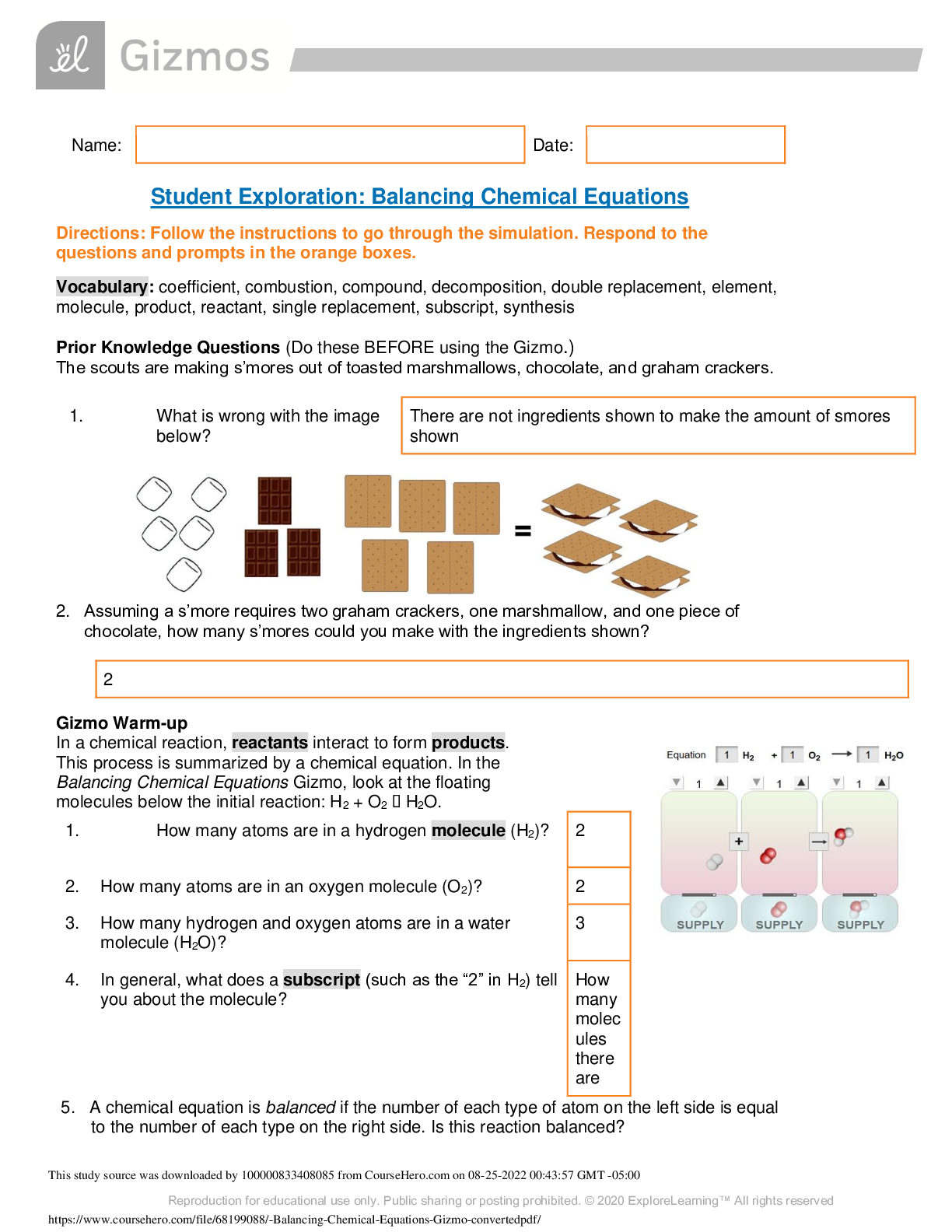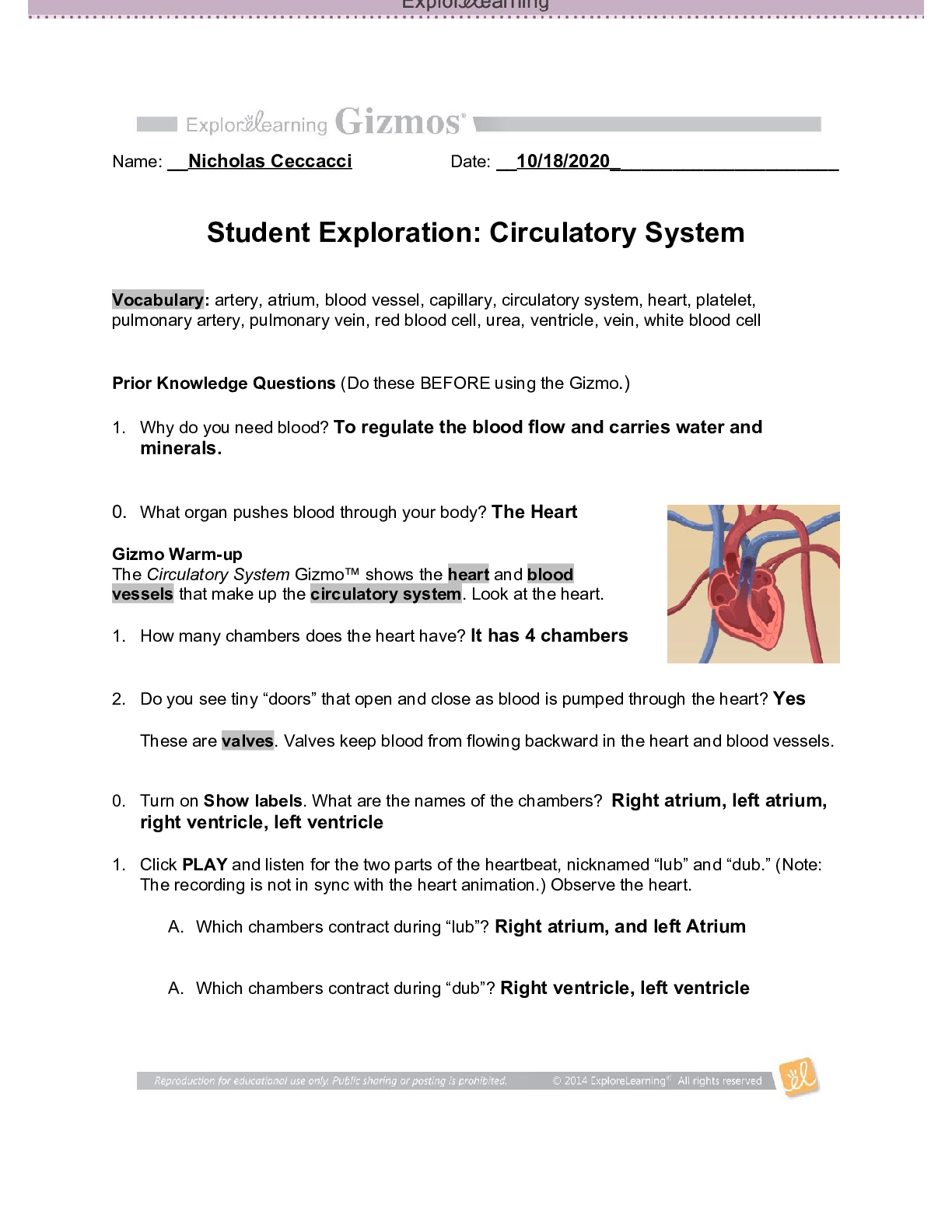SCIENCE 101 > GIZMOS > Orbital Motion - Keplers Laws (Gizmo) -REVIEWED AND VERIFIED BY EXPERTS (All)
Orbital Motion - Keplers Laws (Gizmo) -REVIEWED AND VERIFIED BY EXPERTS
Document Content and Description Below
Student Exploration: Orbital Motion – Kepler’s Laws Directions: Follow the instructions to go through the simulation. Respond to the questions and prompts in the orange boxes. Vocabulary:... astronomical unit, eccentricity, ellipse, force, gravity, Kepler’s first law, Kepler’s second law, Kepler’s third law, orbit, orbital radius, period, vector, velocity Prior Knowledge Questions (Do these BEFORE using the Gizmo.) 1. The orbit of Halley’s Comet, shown at right, has an oval shape. In which part of its orbit do you think Halley’s Comet travels fastest? Slowest? Mark these points on the diagram at right. 2. How might a collision between Neptune and Halley’s Comet affect Neptune’s orbit? Gizmo Warm-up The path of each planet around the Sun is determined by two factors: its current velocity (speed and direction) and the force of gravity on the planet. You can manipulate both of these factors as you investigate planetary orbits in the Orbital Motion – Kepler’s Laws Gizmo. On the CONTROLS pane of the Gizmo, turn on Show trails and check that Show vectors is on. Click Play ( ). 3. Click Reset ( ). Drag the tip of the purple arrow to shorten it and reduce the planet’s initial velocity. Click Play. How does this affect the shape of the orbit? Halley's Comet does not have the size or mass to affect Neptune's orbit at all 1. What is the shape of the planet’s orbit? an ellipse 2. Watch the orbit over time. Does the orbit ever change, or is it stable? yes it makes it thinnerIntroduction: The velocity of a planet is represented by an arrow called a vector. The vector is described by two components: the i component represents east-west speed and the j component represents north-south speed. The unit of speed is kilometers per second (km/s). Question: How do we describe the shape of an orbit? 1. Sketch: The distance unit used here is the astronomical unit (AU), equal to the average Earth-Sun distance. Place the planet on the i axis at r = –3.00i AU. Move the velocity vector so that v = -8.0j km/s (|v| = 8.00 km/s). The resulting vectors should look like the vectors in the image at right. (Vectors do not have to be exact.) Click Play, and then click Pause ( ) after one revolution. Draw the resulting orbit on the grid to the right. 2. Identify: The shape of the orbit is an ellipse, a type of flattened circle. An ellipse has a center (C) and two points called foci (F1 and F 2). If you picked any point on the ellipse, the sum of the distances to the foci is constant. For example, in the ellipse at left: a 1 + a2 = b1 + b2 Turn on Show foci and center. The center is represented by a red dot, and the foci are shown by two blue dots. What do you notice about the position of the Sun? 3. Experiment: Try several other combinations of initial position and velocity. A. What do you notice about the orbits? B. What do you notice about the position of the Sun? You have just demonstrated Kepler’s first law, one of three laws discovered by the German astronomer Johannes Kepler (1571–1630). Kepler’s first law states that planets travel around the Sun in elliptical orbits with the Sun at one focus of the ellipse. [Show More]
Last updated: 1 year ago
Preview 1 out of 8 pages
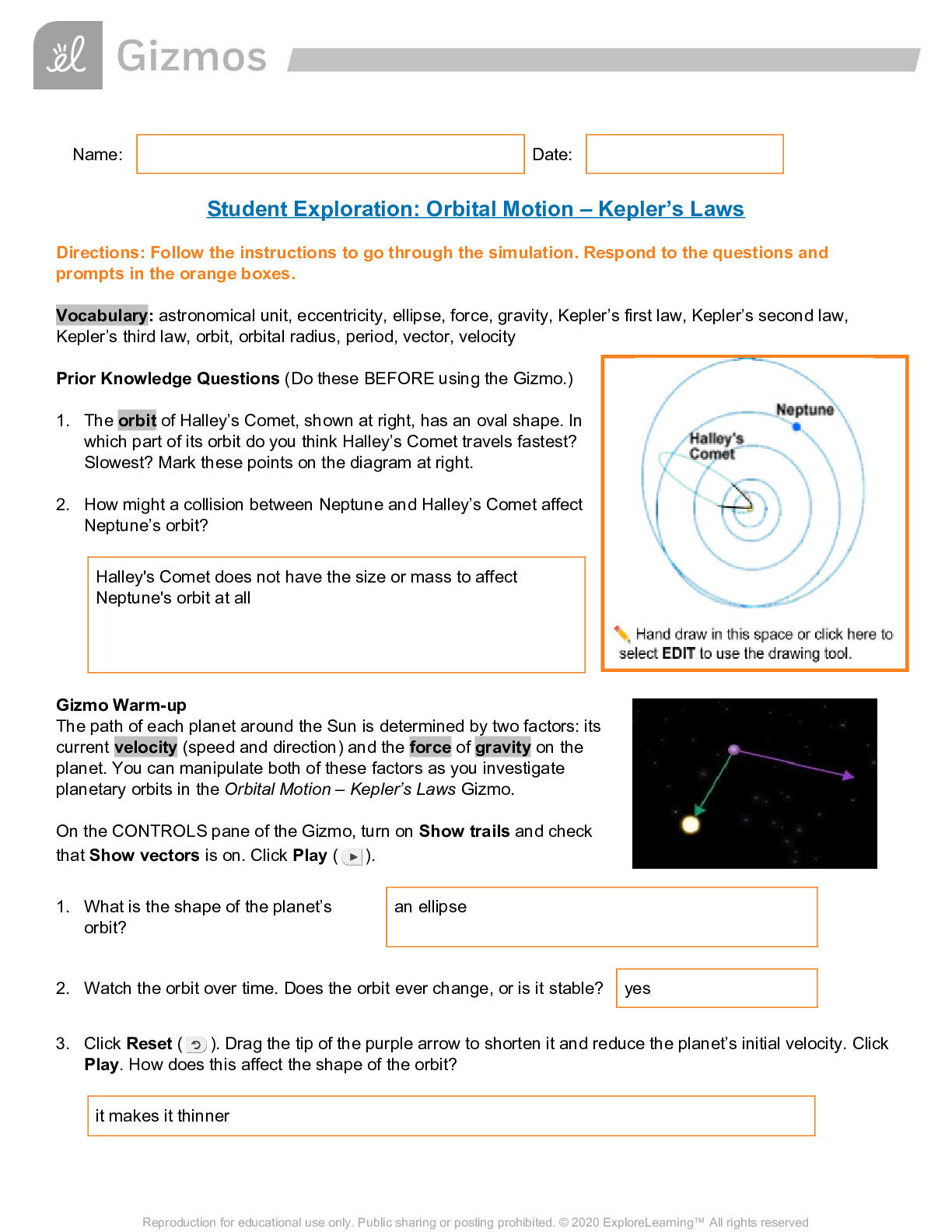
Reviews( 0 )
Document information
Connected school, study & course
About the document
Uploaded On
Jun 21, 2021
Number of pages
8
Written in
Additional information
This document has been written for:
Uploaded
Jun 21, 2021
Downloads
0
Views
181

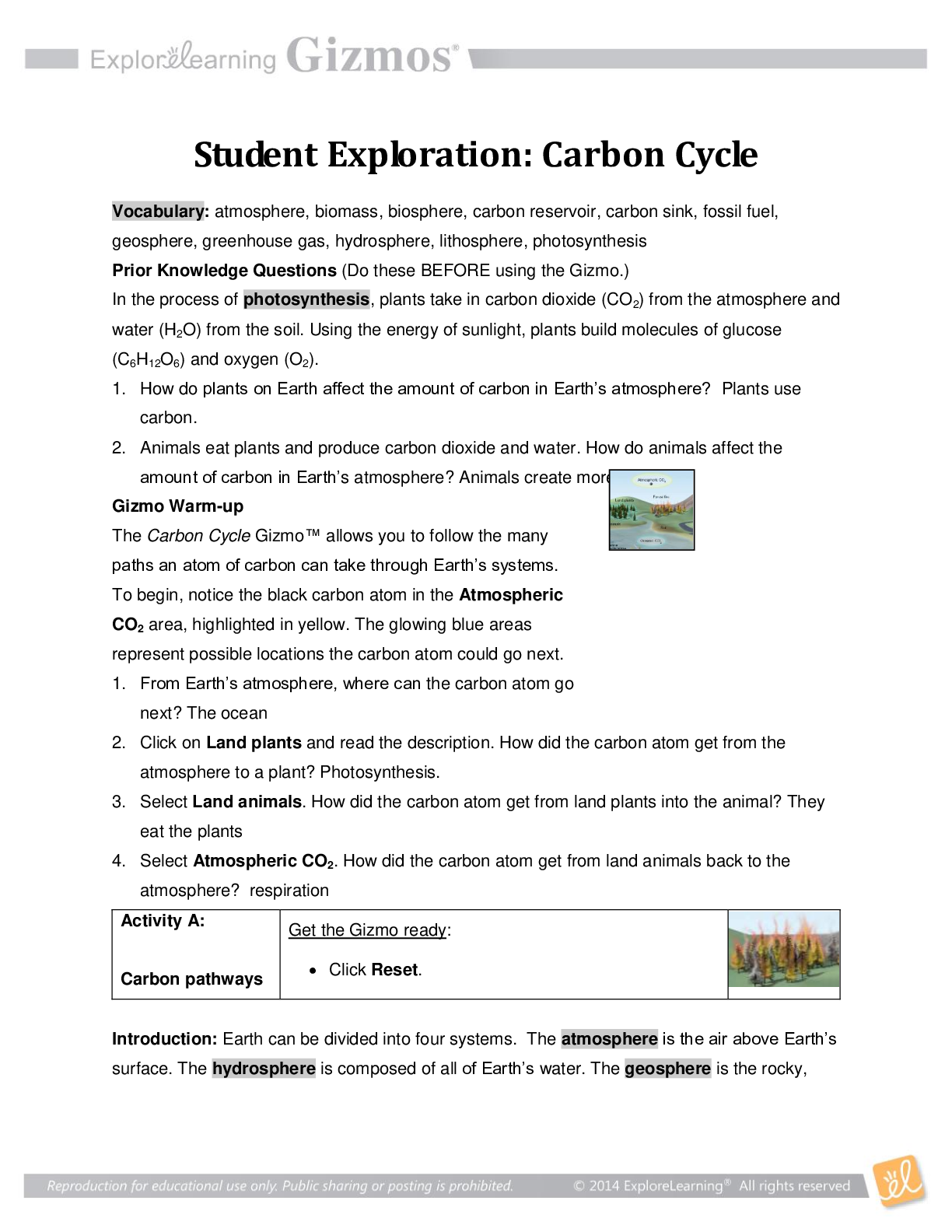

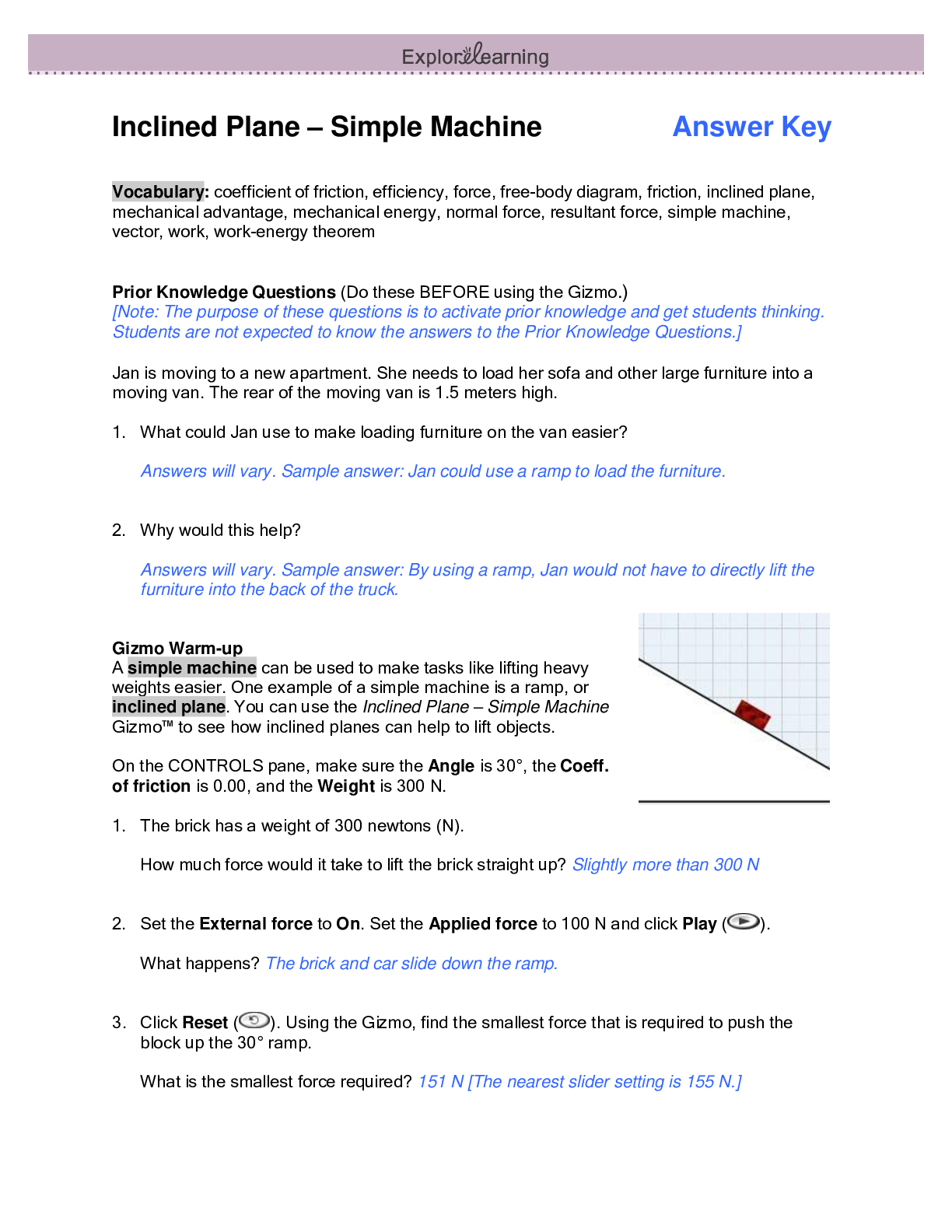
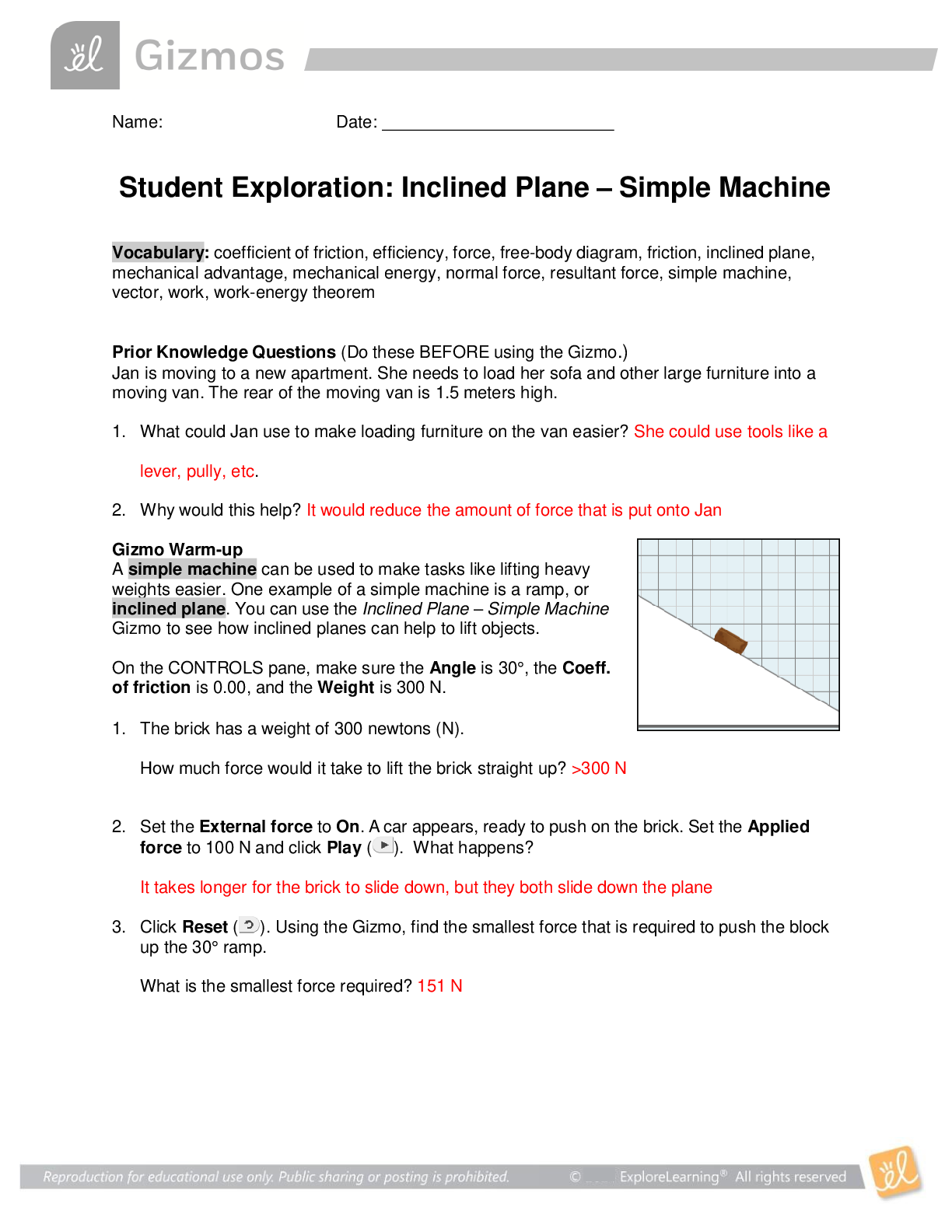
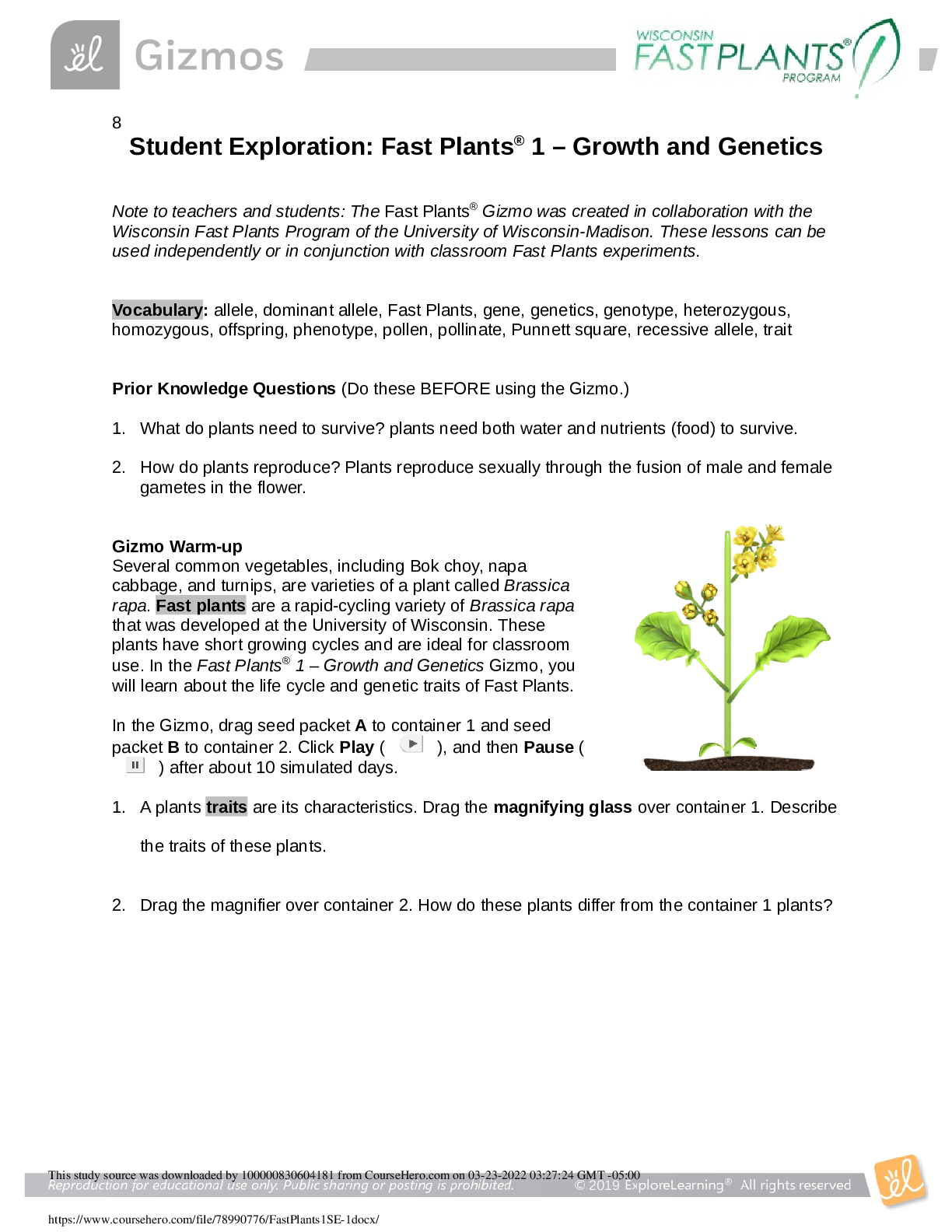


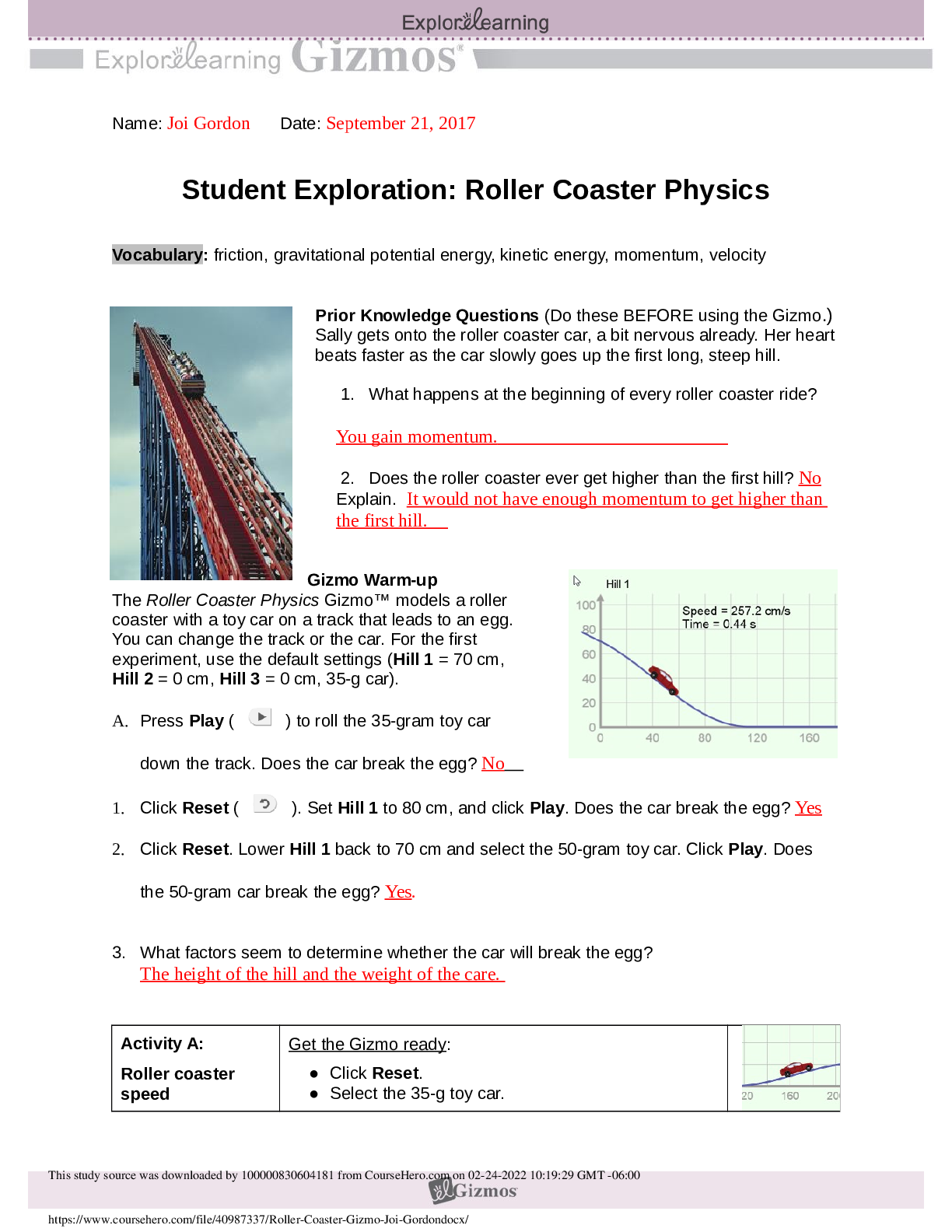
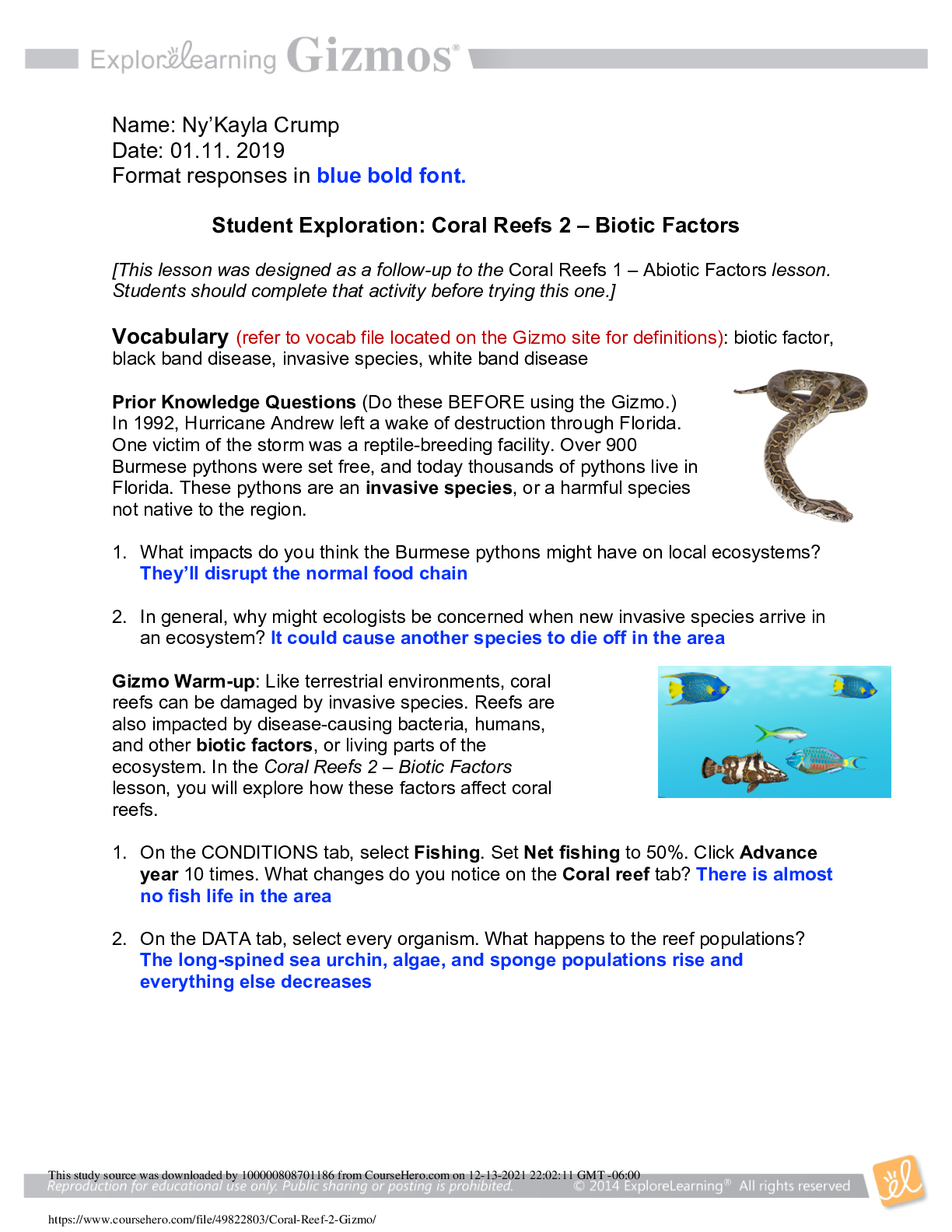

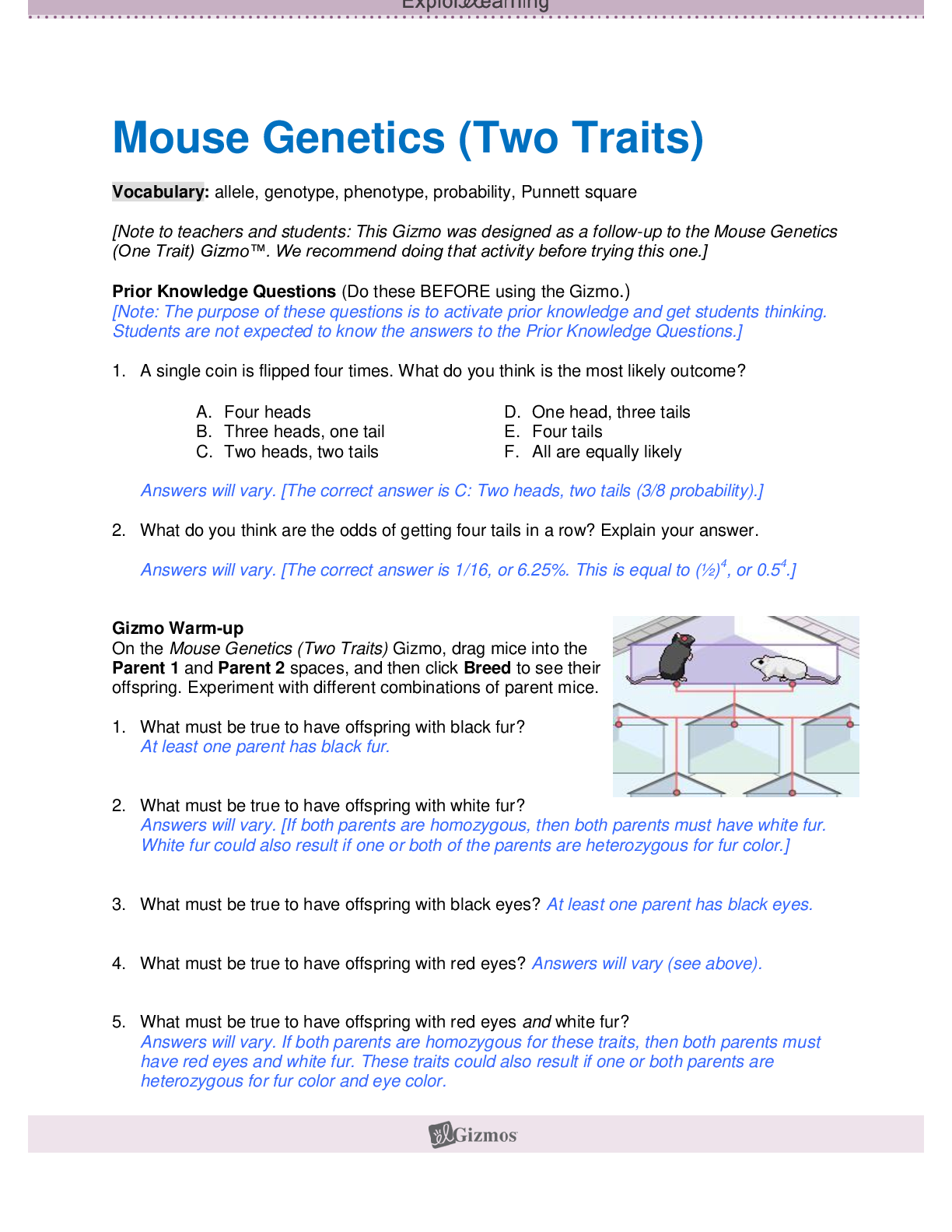

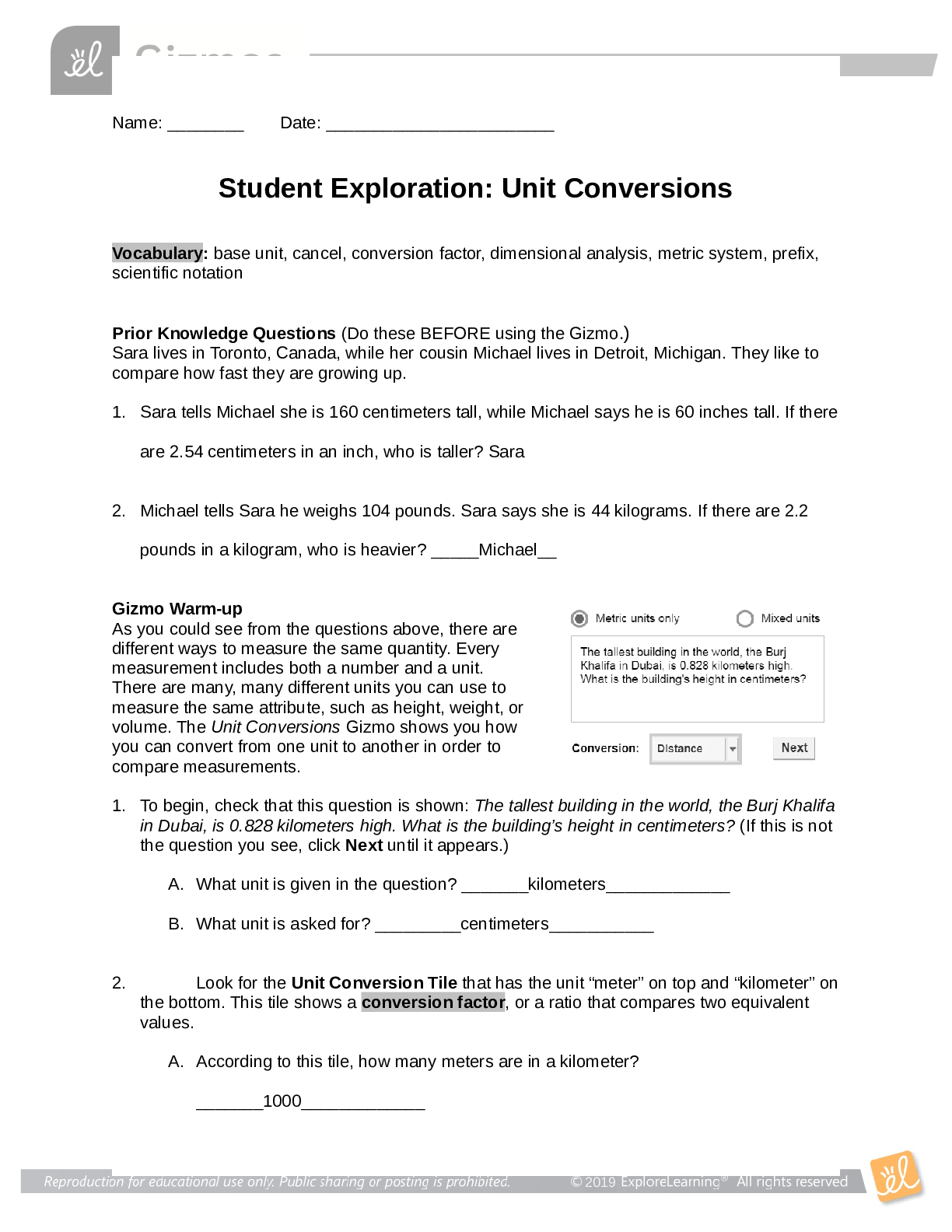

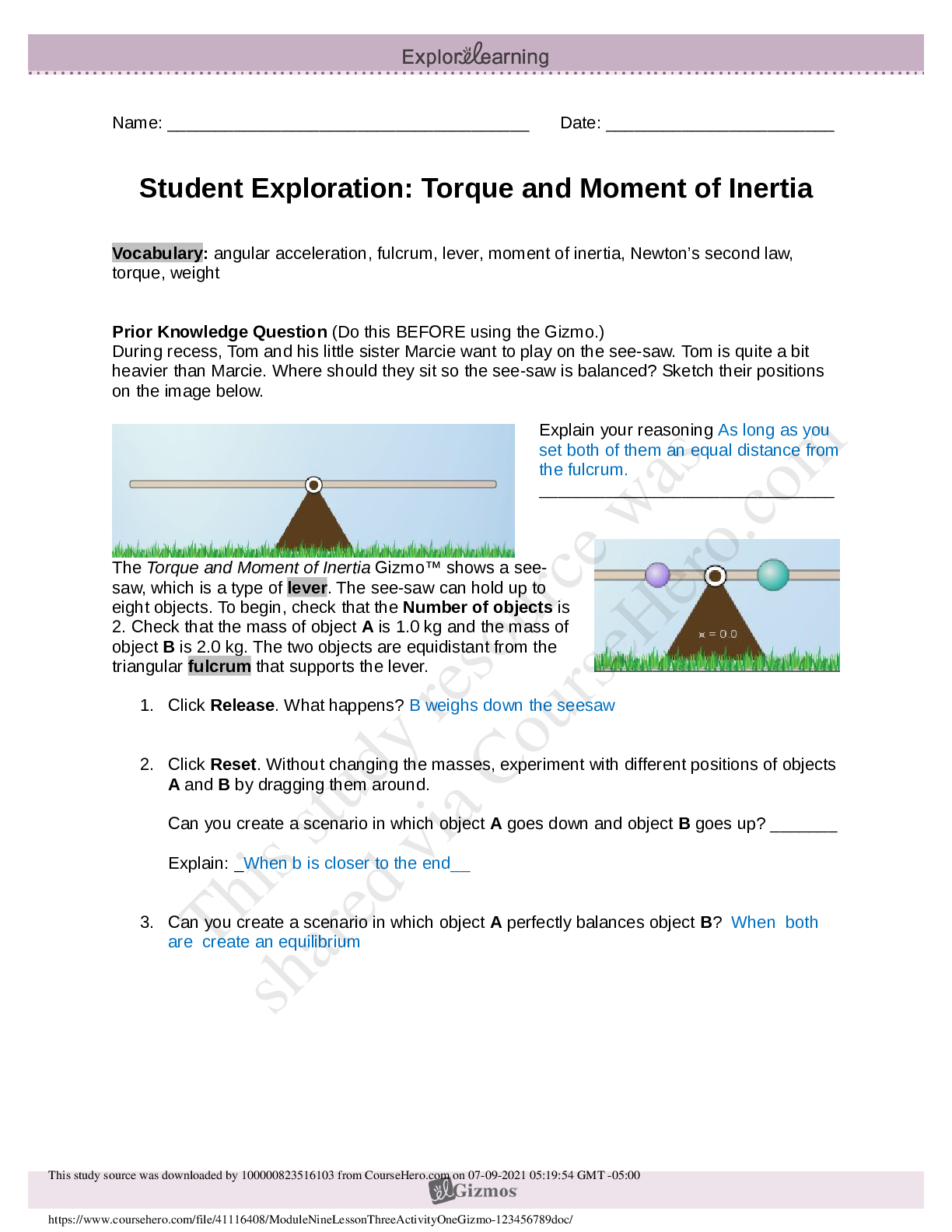

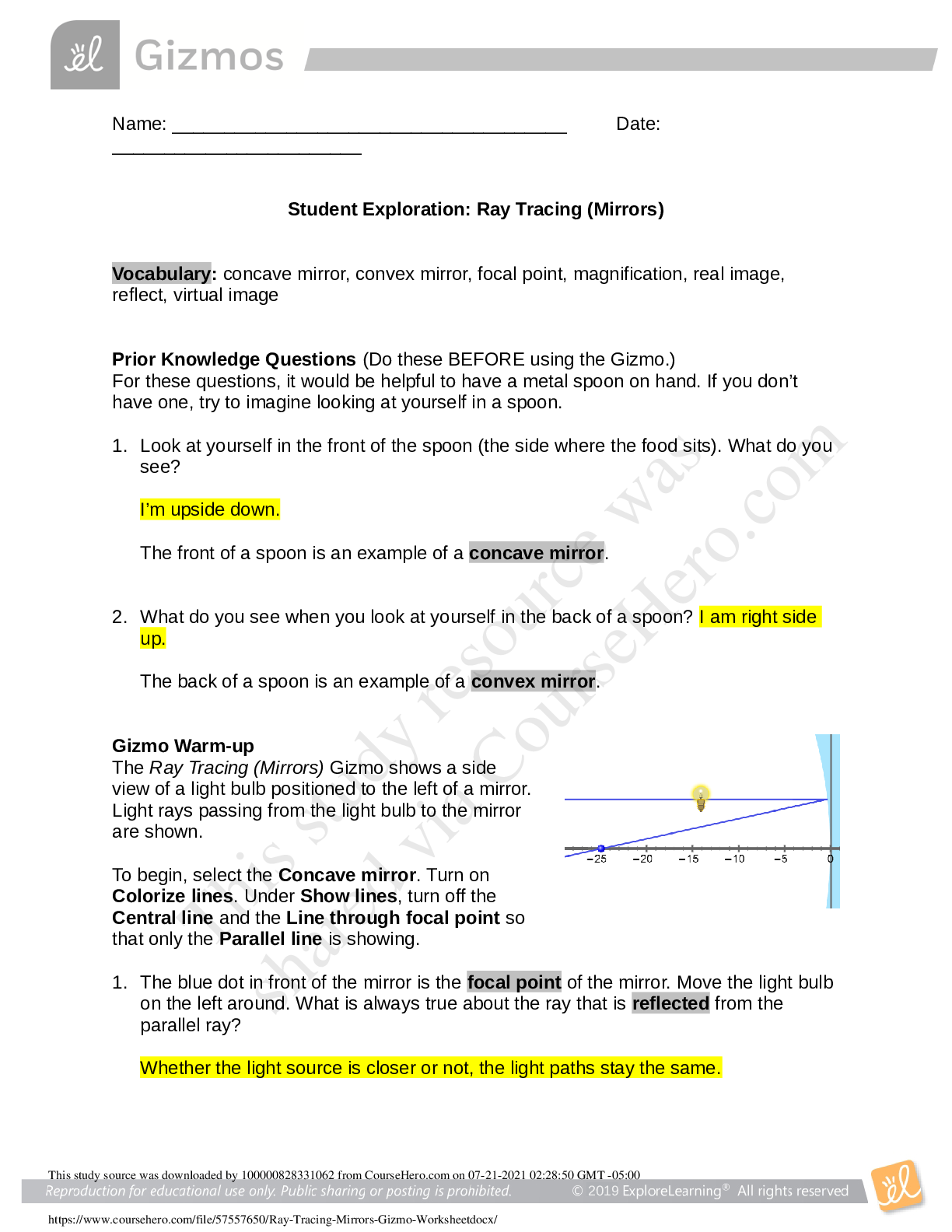

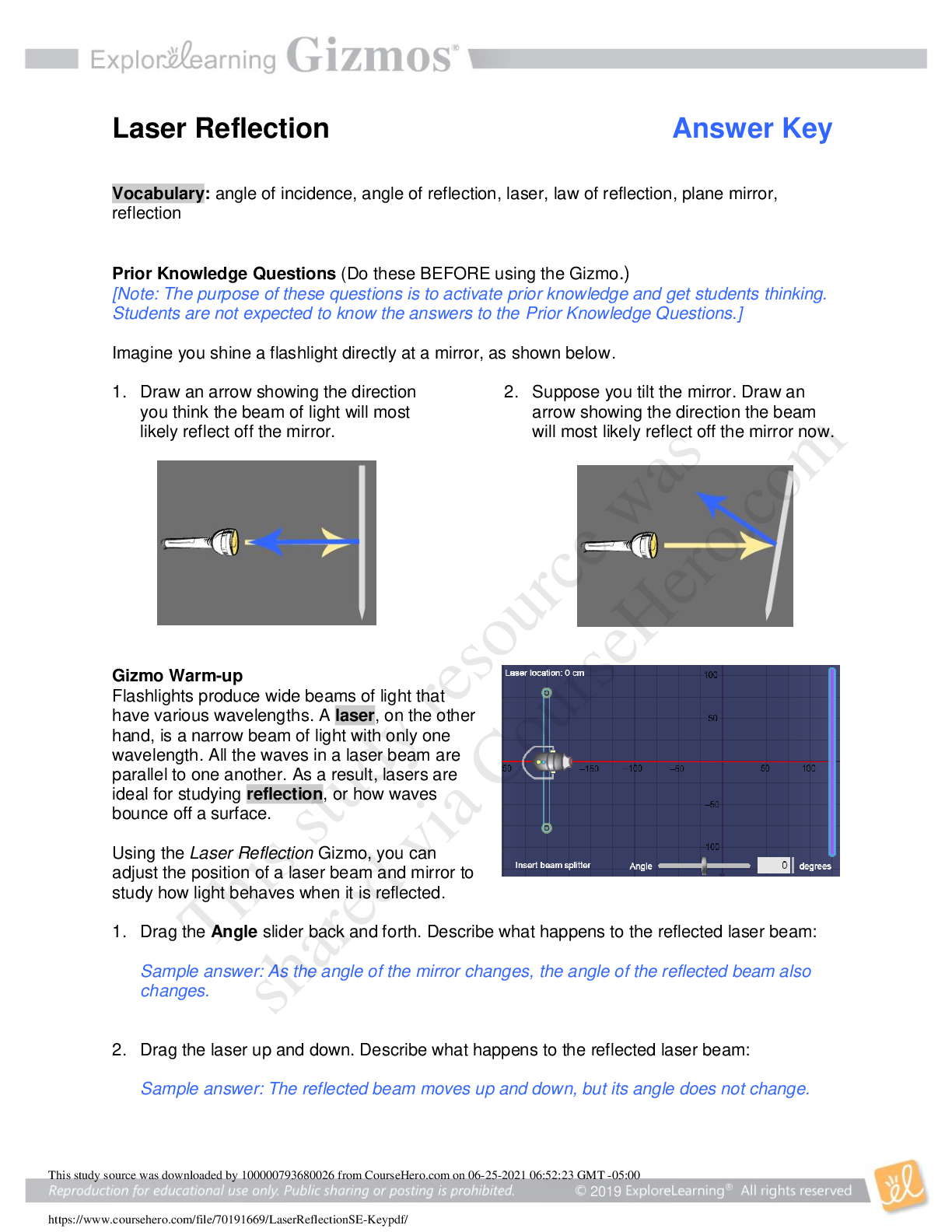



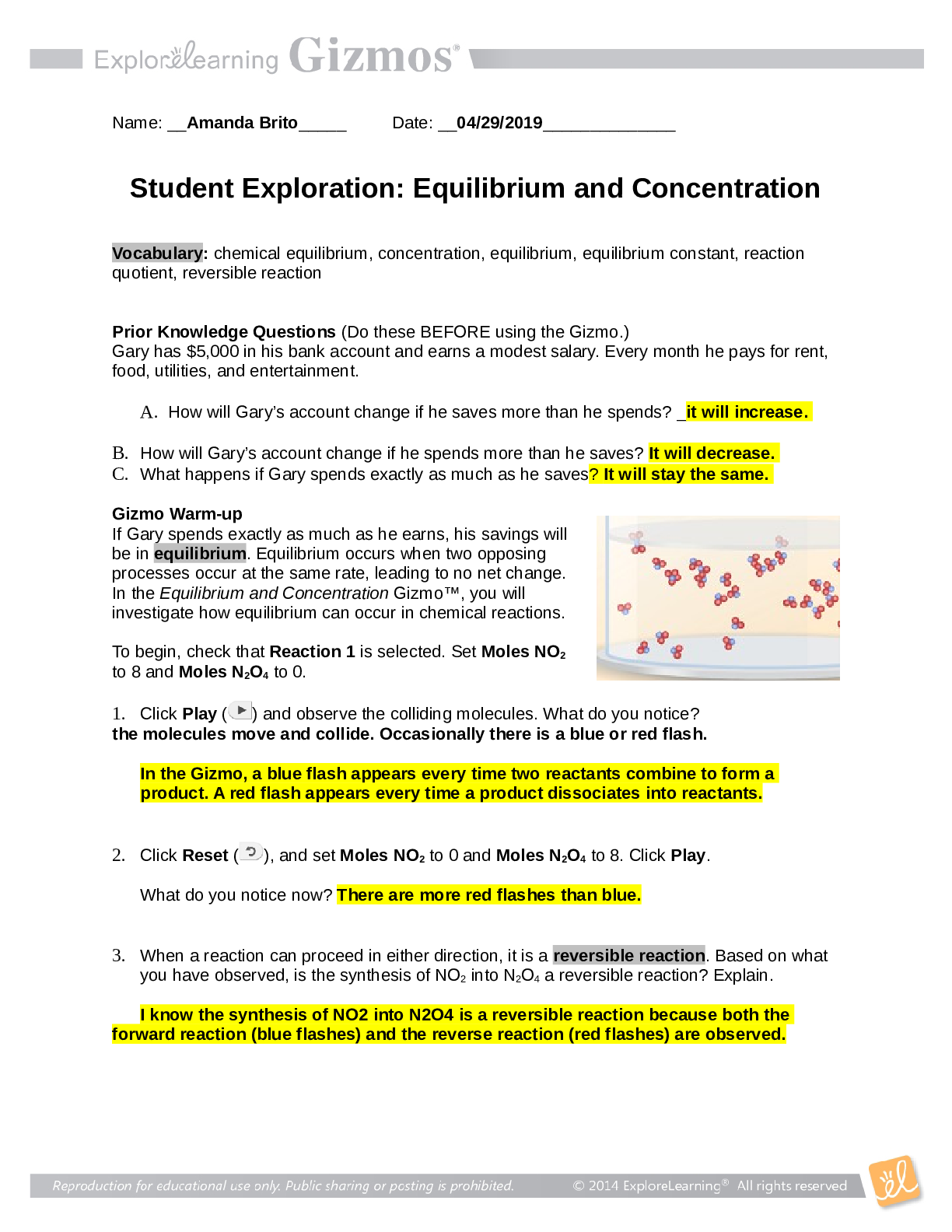
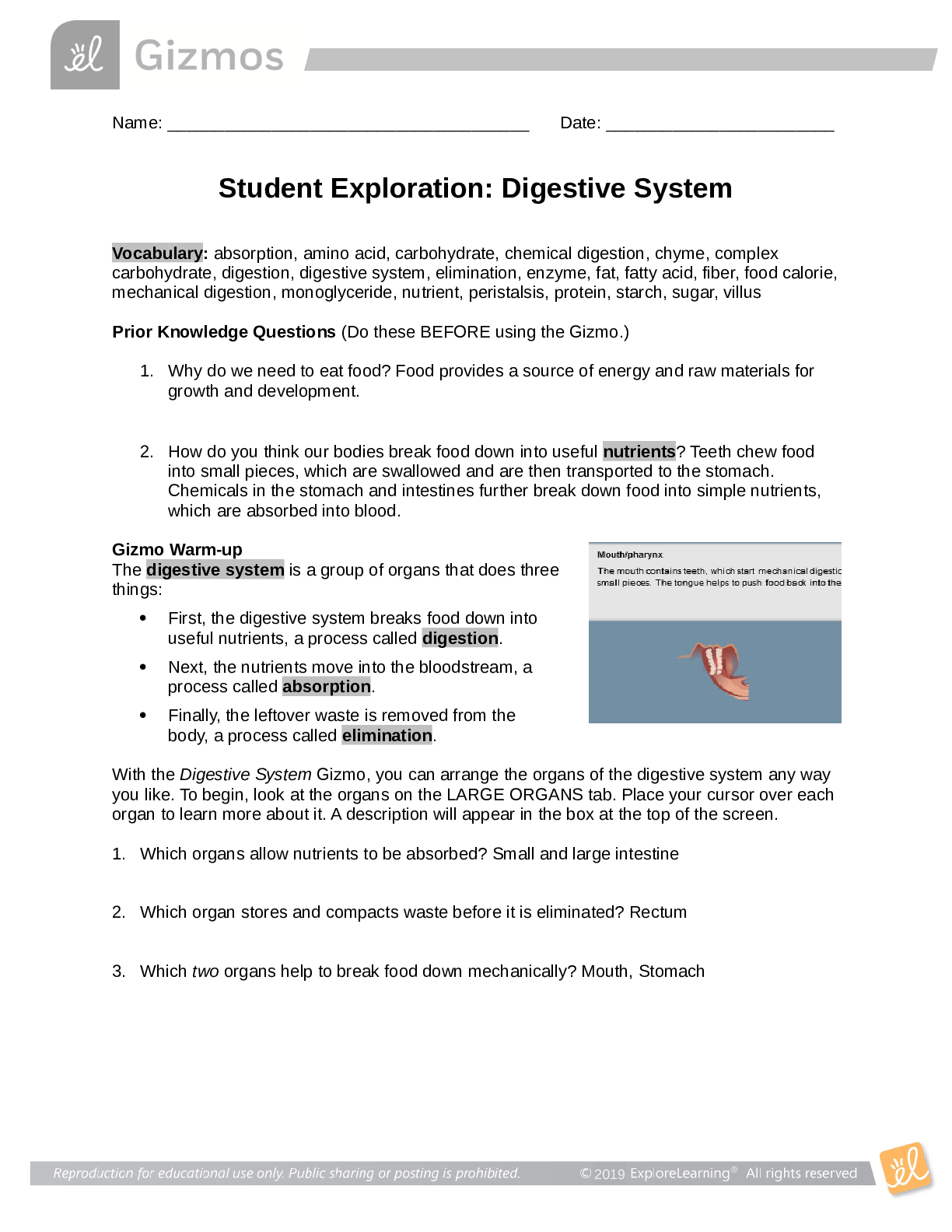

.png)
.png)


.png)
